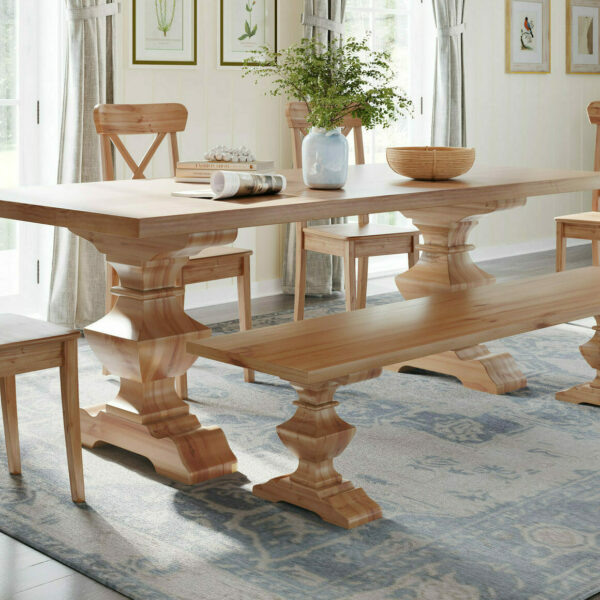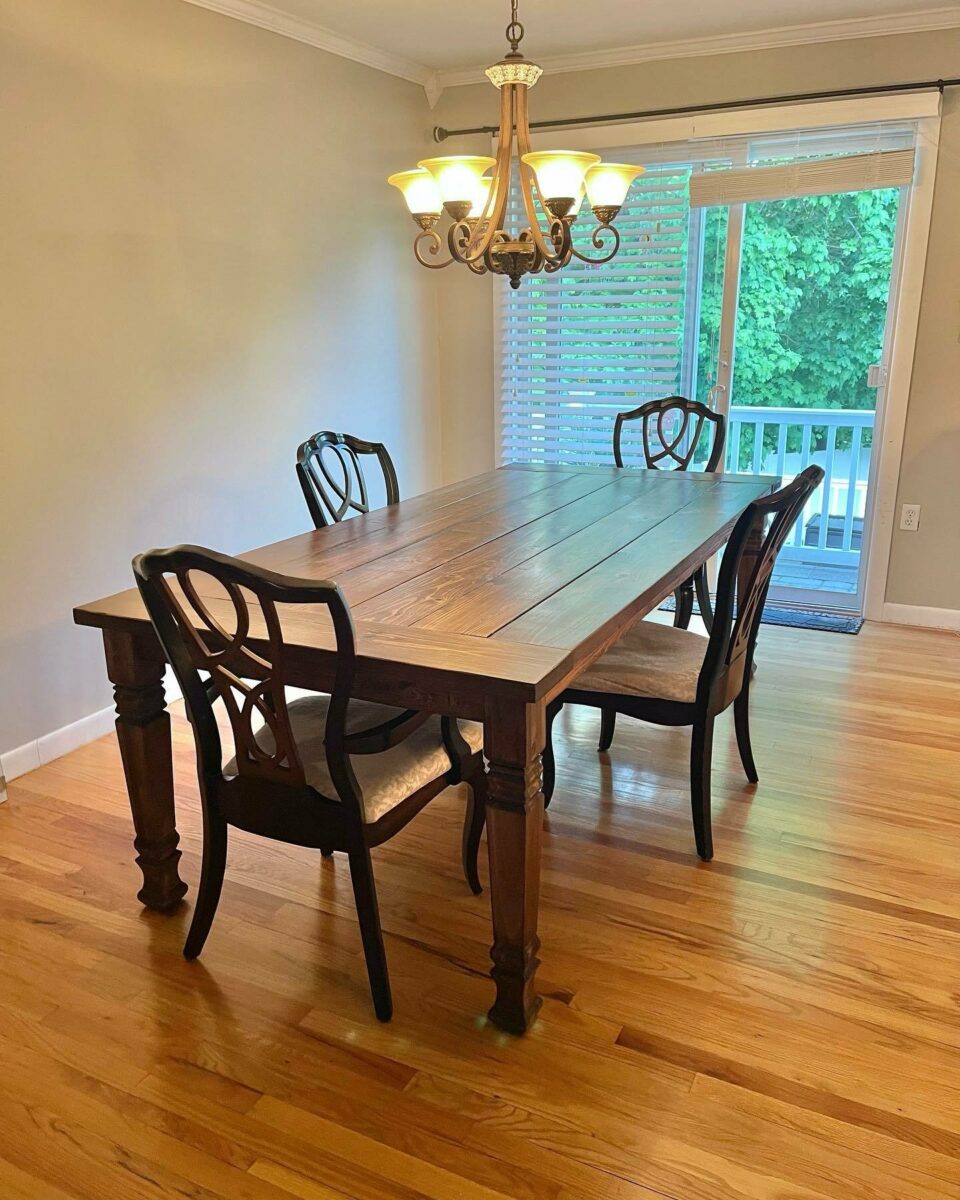Why Dining Room Table Legs Are Crucial for Your Table’s Stability
From Typical to Modern: Locate the Perfect Eating Space Table Legs for Your Design
The option of dining-room table legs plays a critical duty in defining the general character of your space, linking the space in between typical craftsmanship and modern-day looks. While traditional styles such as cabriole and transformed legs stimulate a feeling of timeless elegance, contemporary designs like hairpin and geometric alternatives present a possibility for striking visual passion. Assessing the appropriate balance between these designs requires a nuanced understanding of your existing decor and individual preference. As you take into consideration these elements, the question stays: just how can you perfectly incorporate these varied leg designs to create a harmonious eating experience?
Comprehending Table Leg Styles
The range of dining-room table leg designs can substantially affect both the aesthetics and capability of the area. Each leg style contributes one-of-a-kind visual aspects and functional features, satisfying diverse design choices and use needs. Recognizing these designs is crucial for selecting the ideal table that aligns with your general interior decoration vision.
For instance, tapered legs provide a clean, classic appearance that can boost an area's sophistication, while stand bases supply stability and make best use of legroom, making them excellent for smaller spaces. Barrette legs, a trademark of mid-century modern-day layout, present a commercial style, permitting an airy, open feel. In a similar way, trestle legs stimulate rustic charm, giving durable assistance and a feeling of eternity.
In addition, the option of products plays a substantial function. Wood legs can bring warmth and structure, whereas metal alternatives typically convey a sleek, contemporary vibe. Ultimately, comprehending table leg styles is vital for producing a cohesive dining area that mirrors individual design while guaranteeing usefulness and comfort. By attentively considering these elements, you can boost both the visual and useful allure of your dining space.
Typical Table Leg Options
When picking dining room table legs, typical options commonly symbolize timeless beauty and workmanship. These layouts reflect an abundant heritage and a commitment to quality, making them excellent for those who value traditional aesthetics.
One of the most legendary typical leg styles is the cabriole leg, defined by its graceful bent shape. This design often includes ornamental makings and is most typically discovered in Queen Anne and Chippendale furnishings. Another prominent option is the turned leg, which flaunts a collection of smooth, rounded forms that offer a traditional appearance while maintaining stability.
Furthermore, the straight leg, while basic, supplies a basic and durable framework that can blend effortlessly with a variety of tabletop designs. For those drawn to ornate outlining, claw-and-ball feet legs stimulate a sense of grandeur and can act as a spectacular focal factor in any kind of eating room.
Finally, pedestal bases, although not strictly legs, give an alternative standard alternative that enables for sufficient legroom and can be perfectly carved. Each of these typical leg designs adds to the general atmosphere of a dining-room, weding feature with aesthetic charm.

Modern Table Leg Designs
Modern table leg designs provide a diverse range of designs that highlight ingenious products and tidy lines. These designs often prioritize performance while functioning as striking centerpieces within a dining space. Minimal looks are prevalent, with legs crafted from materials such as steel, glass, and engineered wood, which add to a ventilated and contemporary feeling.
One popular design is the hairpin leg, defined by its slim, tapered structure that gives stability without frustrating the table top (dining room table legs). This design is usually found in mid-century contemporary furniture and can easily enhance numerous eating table forms. One more trend is the use of geometric shapes, where legs may take on angular or unbalanced forms, adding aesthetic rate of interest and a touch of creativity

Mixing Designs for One-of-a-kind Rooms
Often, home owners seek to create special dining rooms that reflect their personal design by mixing different style components. This strategy enables the consolidation of varied aesthetic appeals, leading to an unified yet distinct setting. For example, matching a rustic wood table with sleek, modern-day metal legs can produce an appealing comparison that boosts the room's general charm.
Furthermore, incorporating vintage table legs with contemporary table tops can evoke a sense of background while maintaining a modern perceptiveness. Such mixes not just showcase specific taste but also motivate creative thinking, permitting house owners to curate a space that feels both individual and inviting.
Shade plays a vital duty in this blending procedure; choosing table legs that match or comparison with the existing color pattern can improve aesthetic passion. Whitewashed legs can soften the daring of a dark table surface area, developing a balanced visual.
Tips for Picking the Right Legs
Picking the right table legs is necessary for attaining both performance and visual charm in your eating space. Begin by considering the total design of your area. Standard settings gain from legs that include detailed carvings or transformed layouts, while contemporary areas might call for smooth, minimal designs.
Following, assess the height and security of the legs. dining room table legs. Standard dining tables range between 28 to 30 inches in elevation, so make sure the legs match this dimension for comfort. Additionally, robust materials, such as wood or metal, can enhance security and long life
Examine the leg form too-- choices consist of right, tapered, or pedestal layouts. Straight legs supply a traditional look, while conical legs can include a touch of elegance. Pedestal bases give adequate legroom and are suitable for smaller sized spaces.
Conclusion
In summary, picking the perfect dining space table legs needs mindful factor to consider of both modern and traditional designs. By integrating leg design, height, and material with the overall decoration, a natural and welcoming environment can be attained.
The selection of dining space table leg styles can substantially influence both the appearances and capability of the area. Ultimately, understanding table view website leg styles is crucial for creating a natural eating area that shows individual design while ensuring practicality and convenience.One of the most legendary standard leg styles is the cabriole leg, characterized by its stylish rounded shape. Straight why not look here legs provide a classic appearance, while tapered legs can include a touch of style.In recap, choosing the optimal dining room table legs requires cautious factor to consider of both conventional and contemporary styles.